Login / Register
Artificial intelligence will revolutionize our technologies and transform our lives—enabled by innovations and advances in memory.
That was the message at Micron’s Insight ’18 conference held Oct. 10 in the airy, modern Pier 27 building with stunning views of the iconic Golden Gate Bridge. While sailboats and ferries traversed the sunlit San Francisco Bay outside, more than 350 guests joined hundreds of Micron employees to network over catered wraps, sandwiches, and salads—and, after the on-stage presentations, adult beverages and hors d’oeuvres—and to learn about the possibilities for AI in life, business, and health, enabled by Micron memory.

Micron CEO and President Sanjay Mehrotra kicked off the conference with an overview of the talks to come, highlighting the critical role that Micron’s memory technologies play in artificial intelligence’s ability to “turn information into insight, and insight to intelligence.”
Memory and storage, Mehrotra said, enable AI to analyze and act on data in real time.
“The CPU is the brain,” he said, “and memory and storage are the heart needed to realize the full potential of AI.”

Following his inspiring opening address, eleven industry experts in seven presentations discussed aspects of the technology from chatbots to self-driving cars to DNA and precision medicine. Highlights included:
- The future of Alexa. Amazon Vice President Prem Nataranjan spoke of the world’s most popular virtual assistant and how developers are working to improve “her” capabilities to become:
- More competent. Context is key in any verbal interaction, and Amazon aims for an assistant with memory to perpetuate a conversational thread.
- More knowledgeable. Calculate 50 factotum? No problem!
- More natural. “You can’t engage with and delight your customers unless you sound like them,” Nataranjan said..
- More self-learning, so Alexa can improve by observing the user as well as learning from its own mistakes.
To achieve these objectives, Amazon is introducing such features as Whisper Mode, in which Alexa’s speaking style mirrors that of the user; “Multimodal,” which lets the user interact simultaneously with Alexa and the screens on other devices; “device context,” in which has Alexa knows which device you want her to start your movie on (hint: it’s the one nearest you when you make your command), and personalized features such as speaker ID, enabling Alexa to discern among users and adjust preferences accordingly.
Soon Alexa may act as a true personal assistant, Nataranjan said, reminding users where they left their car keys and helping them to decide where to go on vacation and what to make for dinner. True autonomy is the goal, he said; Artificial General Intelligence, with Alexa, for instance, able to perform any intellectual task that human can do, is the ultimate “holy grail” for AI developers.
“This is like a bicycle race,” Nataranjan said. “We are the very start of the race and it’s going to be a long ride, but it looks like a super exciting ride.”
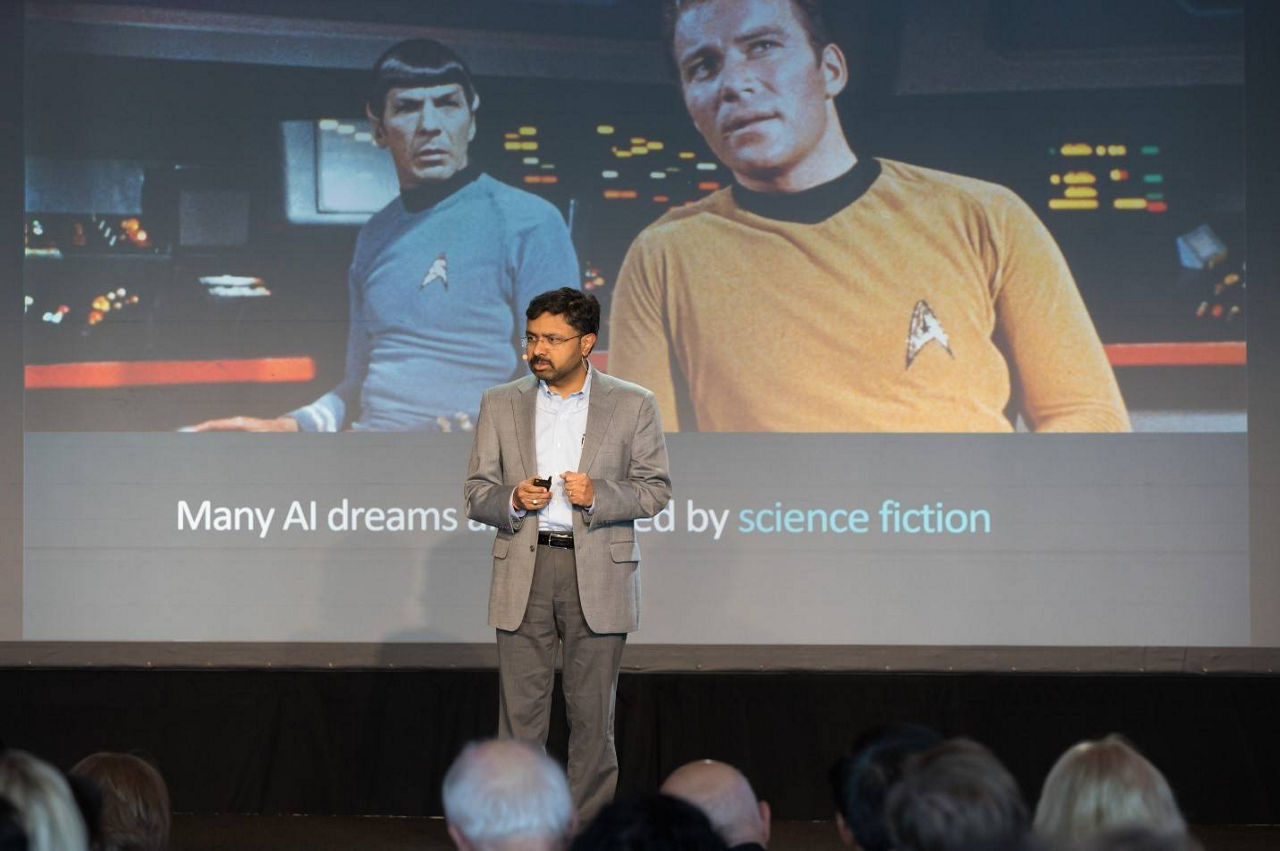
- Chatbots for everyone. Chatbots are incredibly popular around the world, especially in Asian countries, Lili Cheng, Vice President at Microsoft said in a fast-paced exploration of “conversational” AI and its uses. The WeChat application is a must for anyone traveling or doing business in China, she said; its voice-activated apps help people in virtually every aspect of their lives. The most widely used chatbot, Xiaoice (Shao-ice), even has a personality and widespread fame, with “her” own YouTube channel and TV show.
Training chatbots to converse naturally and intelligently is much more complicated than it might seem, however, she said. People don’t talk in a linear fashion, but may switch among topics, interrupt one another, start and stop, ask questions, argue, or just listen. Showing empathy helps the user stay engaged; asking questions can help them better express themselves. Meeting their needs and making their lives better are Microsoft’s goals for the technology, she said.
“If we want to integrate AI into everyday life, we need to learn a lot more about modeling human conversation, and be open to experimenting,” Cheng said. “And we have to think not just about getting tasks done, but about social skills and emotional skills. Because the moment you have a voice, people attach feelings to it.”

- Thanks for the memory. Soon, the amount of data generated may exceed the number of stars in the sky. In fact, said Micron Vice President Sumit Sadana, data is already coming from outer space, and may help us to determine whether life exists elsewhere in the universe. A new radio telescope in Australia is capturing data at the rate of 7.5 terabytes per second, a rate expected to increase one hundredfold by 2025, he said.
But the “exponential growth” in data we are seeing also comes from within, Sadana pointed out. DNA sequencing, medical histories, studies of the unique bacteria populating each person’s digestive system (the “microbiome”) and more are producing more data than humans could ever process and analyze. Even conventional, CPU-processing computers can’t do it in less than a lifetime. Only AI equipped with fast processing and capacious, accessible memory can find the needle in the proverbial haystack: the answers to the mysteries humans have sought to unlock since the beginning of time. Is there intelligent life in the universe? What causes disease? Can aging be halted (without dying, of course) or even reversed?
As Sadana noted, fast, vast memory is essential for AI to function at all, and especially for sorting massive amounts of unstructured information.
Our bodies have 10 times more microbial cells than human ones, and the microbiome comprises millions of genes. Analyzing and categorizing all this data is essential to finding cures for ALS, cancer and other illnesses—and only AI can do it.
Artificial intelligence, Sadana said, “is going to change medicine.” And Micron’s advanced memory chips—low-power, high-density DRAM, and fast NAND flash memory—will lead the way.

- Replacing Moore’s Law. For years now, tech industry insiders and media have been proclaiming the death of Moore’s Law. That law, which observed that the number of transistors in a circuit doubles about every two years, no longer holds for conventional computer processors, or CPUs. Transistor numbers aren’t doubling any more—but other features are.
The panel discussion, “AI Opportunities for Consumer & Business,” featuring experts from Qualcomm, NVIDIA, and Verily, noted many of these advances with a focus on artificial intelligence, and suggested a replacement for Moore’s Law: one recognizing that power, performance, and memory are doubling every 18 to 24 months, while technology costs are shrinking.
Panelists also discussed:
- Advances in healthcare diagnostics, treatment, and monitoring powered by AI;
- The potential for 5G technology to make our phones and other handhelds truly smart; and
- Whether AI will someday help us tell the difference between “fake” and real news sites.
In other words, the technology will soon be ubiquitous, enabled by vast quantities of data stored and processed using high-density, high-speed memory.
“AI is on the cusp of breaking out,” NVIDIA Vice President Premal Savla said. “We are seeing it in every field.”

- The heart of AI is memory. Artificial intelligence will be a game-changer in medicine, advancing medical diagnoses and treatment farther and faster than ever before, predicted Linda Somerville, Vice President at Micron. And it will happen because of memory, which she called the “heart” of AI.
“The processor is the brain,” she said. “Memory is the heart.”
To illustrate, Somerville told a story from her own heart, of her teenage son’s diagnosis with a rare form of cancer. He underwent conventional treatment and is doing well, she said, but as a scientist, her initial response to the diagnosis was to plunge into research. What she read excited her about the future of health care, in particular “precision” or personalized medicine, in which treatments are tailored according to an individual’s biology and other factors, she said.
“As a technologist, I can see how memory matters in the development of personalized medicine,” Somerville said.
AI will accelerate the development of precision treatments; its rapid DNA sequencing will help doctors to classify tumors and develop tailored treatment plans, she said. AI technology also promises to lead to the discovery of new drugs and treatments that are far less invasive, with better outcomes.
Data, she pointed out, is the lifeblood of AI. And Micron memory serves as the technology’s heart, providing the information that fuels artificial intelligence—that keeps it working.
To illustrate, she described two medical research projects using Micron technologies:
- 3-D tumor imaging for precision cancer treatments. Researchers at Oregon Health and Science University’s Knight Cancer Institute are using machine learning to create 3-D images of cancer cells from high-resolution images taken with electron microscopes. Micron’s customized FPGA based accelerator boards with dense high-bandwidth memory helps accelerated machine-learning inference engines to turn 3-D image rendering from a many-step process of cutting and splicing into a seamless one-step process to refine cancer therapies for individual tumors.
- Sifting through veterans’ data. The U.S. Department of Energy and Lewis Rhodes Labs are using Micron’s custom hardware to analyze the unstructured data of millions of U.S. military veterans—a data set too large to be interpreted without the power of AI. Hidden in their physicians’ notes, test results, imaging files and other types of data may be information useful in the detection and treatment of illnesses including cardiovascular disease and could help prevent suicides, she said.
“These huge genetic databases are going to need higher-performance working memory, and higher-capacity storage memory,” Somerville said. “Memory technology will contribute to faster and more accurate diagnoses and treatment with lower costs and better outcomes. We can use memory technology and the power of AI to solve these important health challenges. It makes me proud of what we’re doing at Micron,” she said.
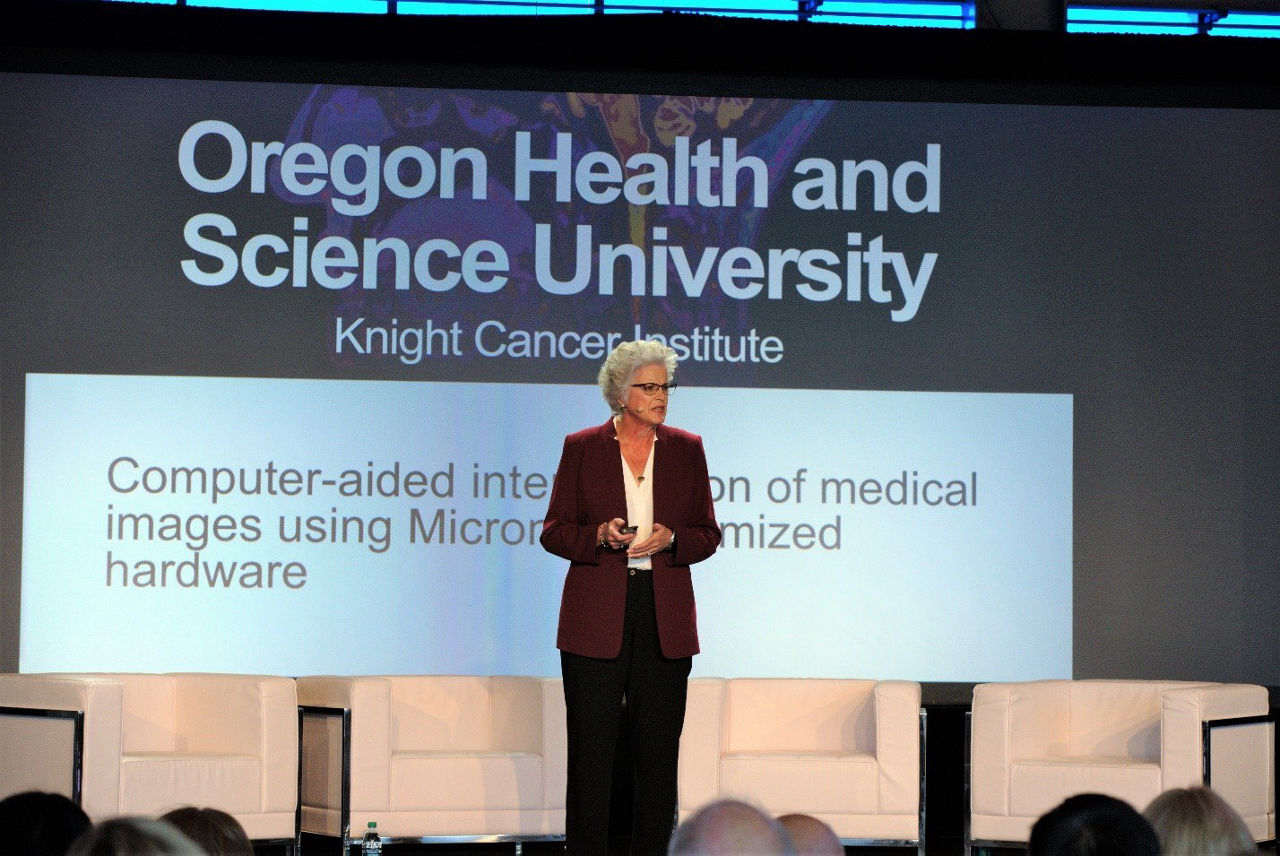
- The daily commute—your way. Someday soon, your car will drive you to work. That’s a given, as automakers increasingly invest in AI technologies for autonomous vehicles. But what if you’re feeling rushed, or want to relax and take a scenic route instead of the freeway?
In “AI and Automotive,” Simon Euringer from BMW and Vijay Nadkarni from Visteon provided a sneak peek into how AI technologies will provide truly personalized experiences in our cars, not only tailoring our music and media preferences to individual drivers but allowing us to set parameters for driving style, as well.
“Each of us drives differently every day,” Euringer said. “AI is adaptable to mood, situations, and context,” including weather and traffic conditions, the time of day, and other variables. “It knows whether you like to refuel at the start or end of a trip, which station you like,” and more.
And, the men said, AI is coming to the automotive industry much more rapidly than many realize—as soon as 2021 for Level 4, or “mind off” driving.
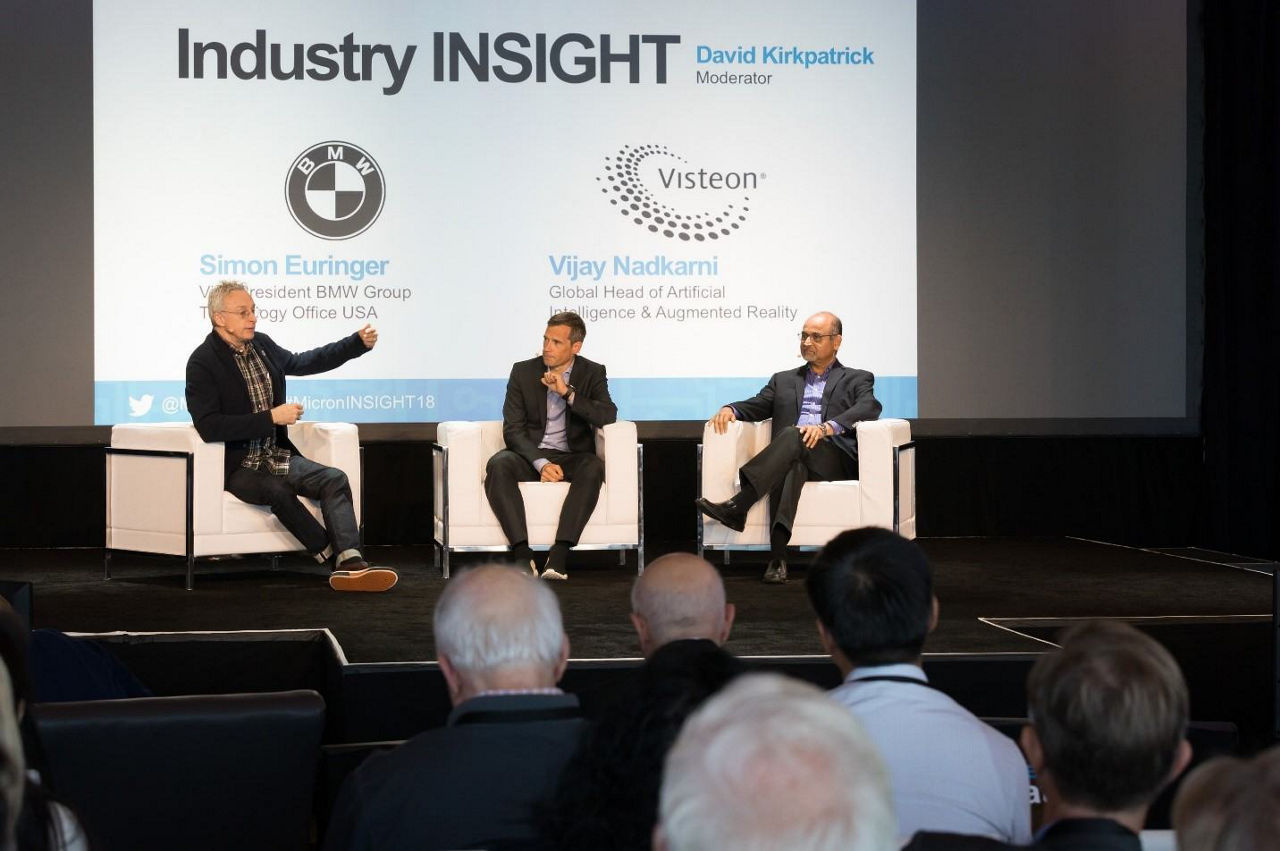
- AI with heart. Topping off the day’s presentations, Tegmark turned the focus away from AI’s potential to enhance and even save lives to the very real possibility that the technology could someday destroy the human race.
“If we bumble into AI unprepared, it will probably be the biggest mistake in human history, resulting in our own extinction,” Tegmark, author of “Life 3.0: Being Human in the Age of Artificial Intelligence,” warned in his keynote address.
“We’d better get it right the first time.”
Although many shrug off Artificial General Intelligence, the vaunted “holy grail” of AI, as unlikely, technology experts agree that it is only a matter of time before our devices are as smart as we are, Tegmark said. “Superintelligence,” the next level, means AI will be designing and improving itself, and advancing much faster than it is today, when mere humans are at the helm.
When our technologies are smarter than we are, then what? Tegmark asked. “What do we want the role of humans to be if machines can do everything better than we can do?”
The answer, he said, is up to us.
“Where do we ultimately want to go with artificial intelligence?” Tegmark said, calling this question the “elephant in the room.”
“What sort of society are we hoping to create? Let’s envision an inspiring future, and steer toward it.”
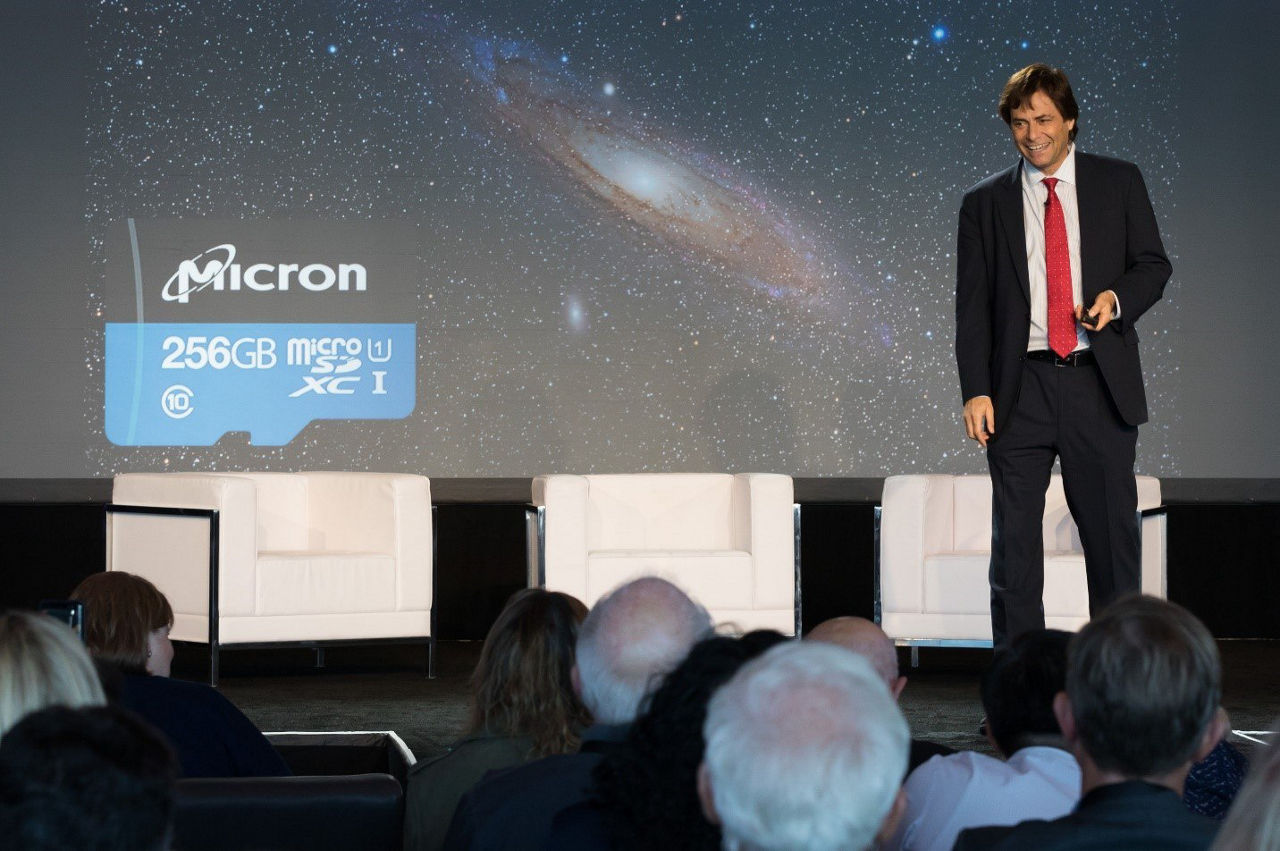
More than $100 million Micron awards
During the conference, Micron announced more than $100 million in funding for AI research and education and promotion of diversity in the AI field.
The winners include:
- Startups. The organization is launching a new, $100 million fund for startups developing AI applications for automotive, manufacturing, and other industries.
- Diversity. Of that $100 million, $20 million will be awarded to organizations led by women or members of other underrepresented groups. This amount augments a commitment the Micron Foundation announced last August to award $1 million to higher-education institutions in Virginia for technology education for female, minority, low-income, and other underrepresented population groups.
- Curiosity. The Micron Foundation’s new “Advancing Curiosity” grant provides $1 million to universities and non-profits for AI research. Winners announced at the conference are:
- AI4All, whose AI summer camp for teens gives special consideration to young women, underrepresented groups and families of lower socioeconomic status;
- Berkeley Artificial Intelligence Research (BAIR) Lab at UC Berkeley's College of Engineering, where researchers and graduate students develop fundamental advances in computer vision, machine learning, natural-language processing, planning and robotics, and
- The Stanford Precision Health and Integrated Diagnostics Center, researching the use of AI in precision medicine.
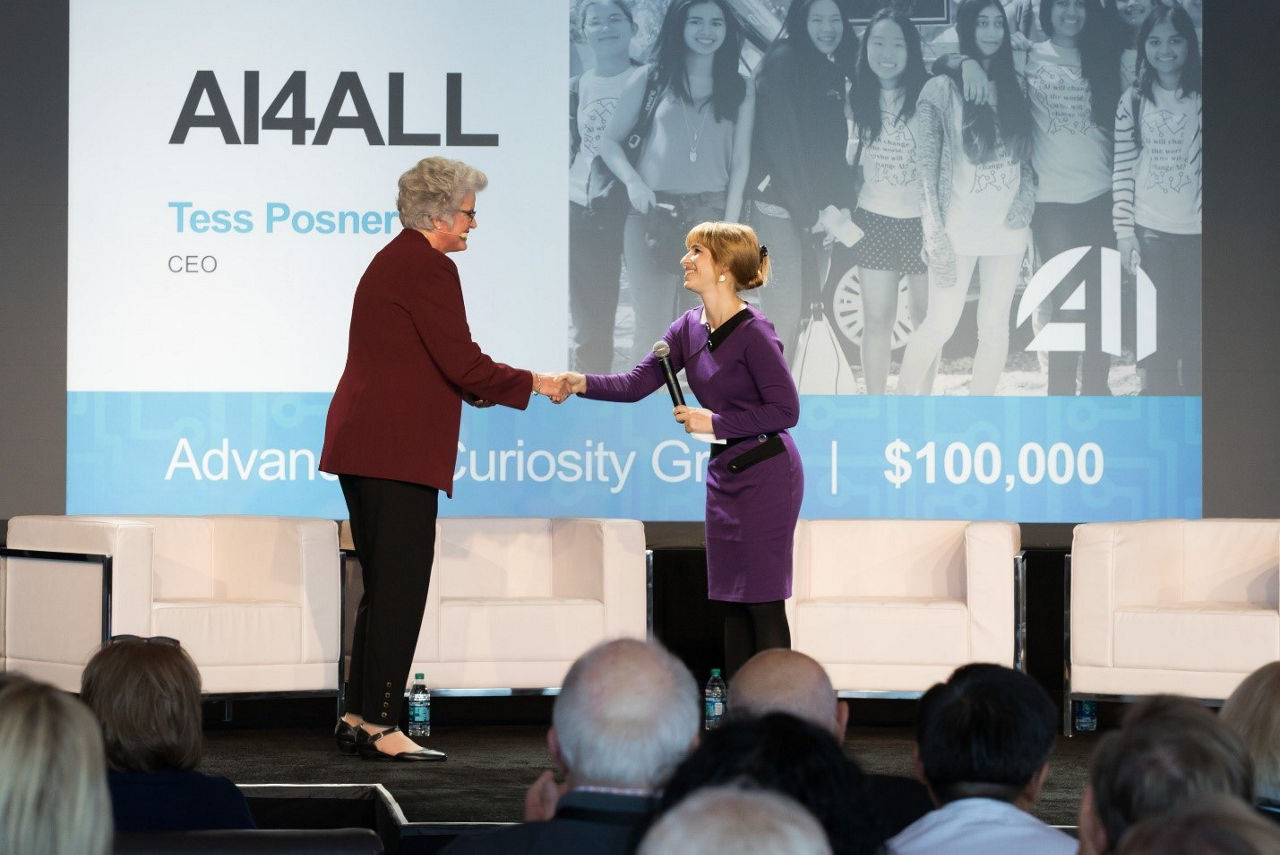
Micron CEO and President Sanjay Mehrotra wound up the speakers’ portion of the conference with closing remarks and an invitation to all to proceed to the AI “Experience Zone” and after-party.
Are You Experienced? In the Zone
After the talks, the crowd moved downstairs to the Experience Zone, where 18 interactive exhibits invited participants to explore AI and other technologies in farming, medicine, fashion, surveillance, and even pets—while enjoying beverages from the hosted bar and delicious appetizers provided through the evening. The popular exhibits included:
- Sony “aibo” robotic dogs that learn and adapt to their owners
- A BMW autonomous car loaded with cameras and sensors for data collection
- Turing Video surveillance robots that watch for intruders—and can speed humans to the “scene of the crime”
- Silverdraft Supercomputing’s “Demon” virtual reality experience, which provides clients and customers with a virtual “sneak peak” at architecture, engineering, and construction projects as they will appear after being built, for fine-tuning before even turning the first spade of dirt
- NVIDIA artificial intelligence cameras that scan faces to determine moods
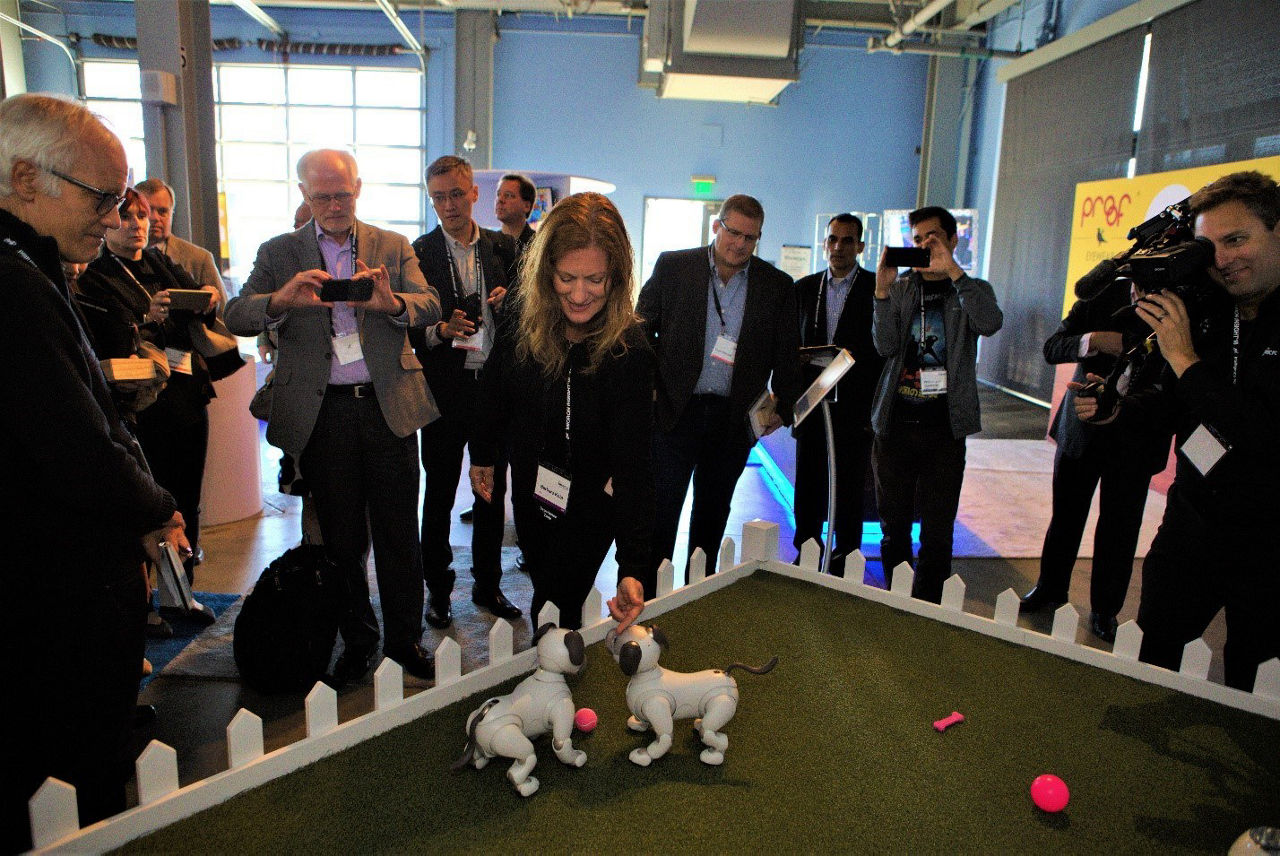
At evening’s end, electronic music and swirling lights energized an already-high-energy crowd, sending them out with inspiration, excitement and ideas for how to create a future that, as Tegmark exhorted, features “AI not that overpowers us, but that empowers us.”